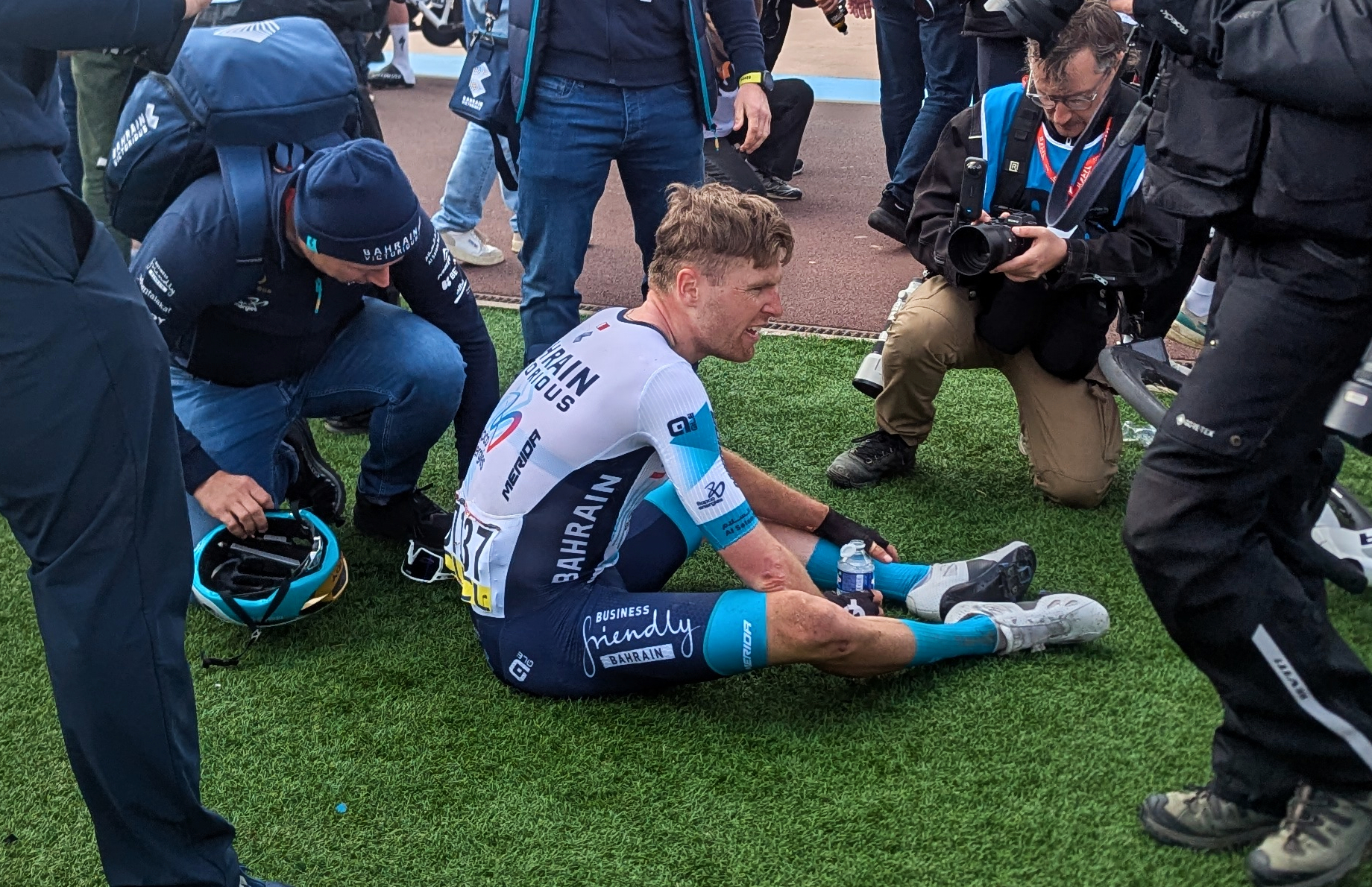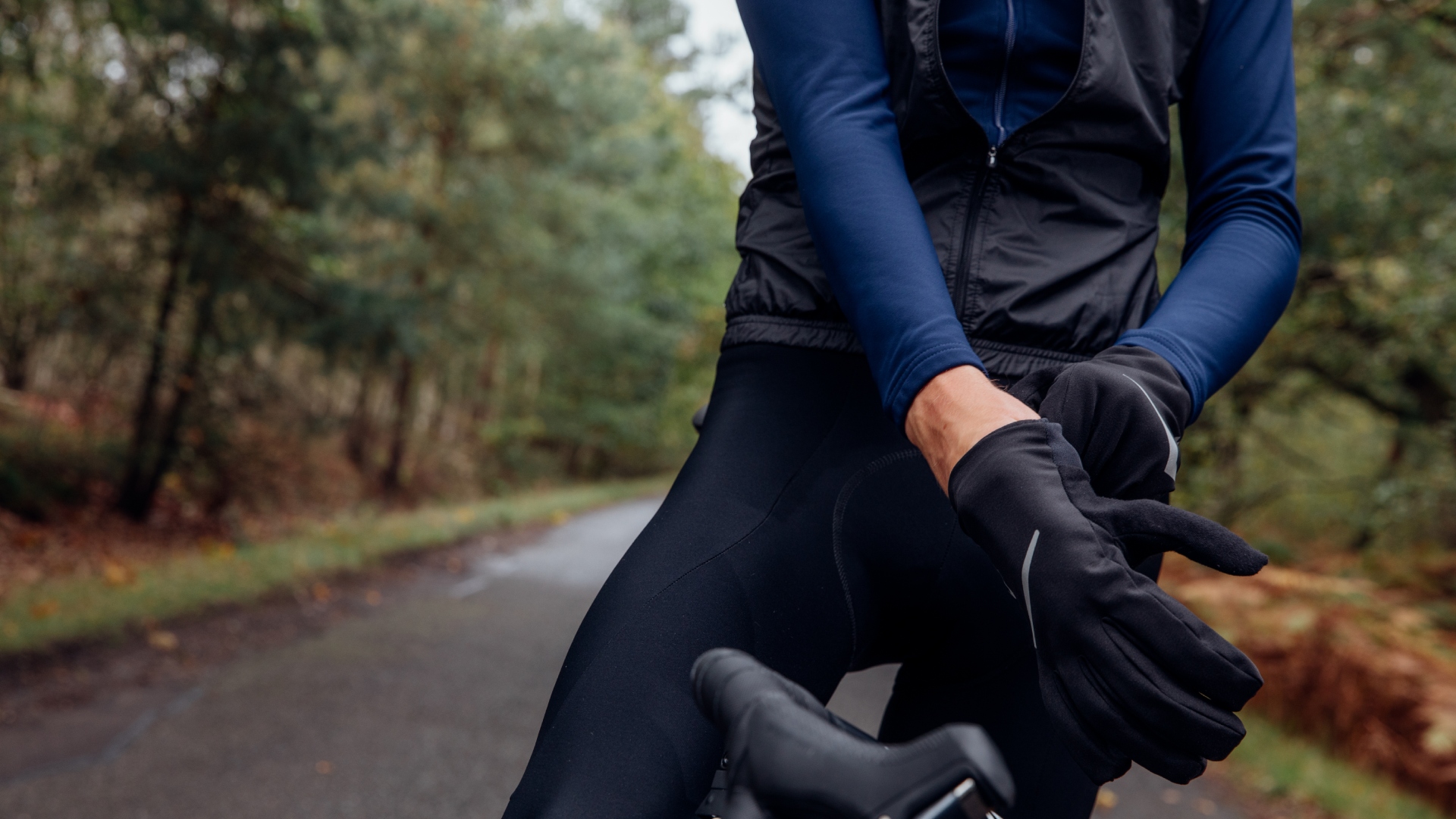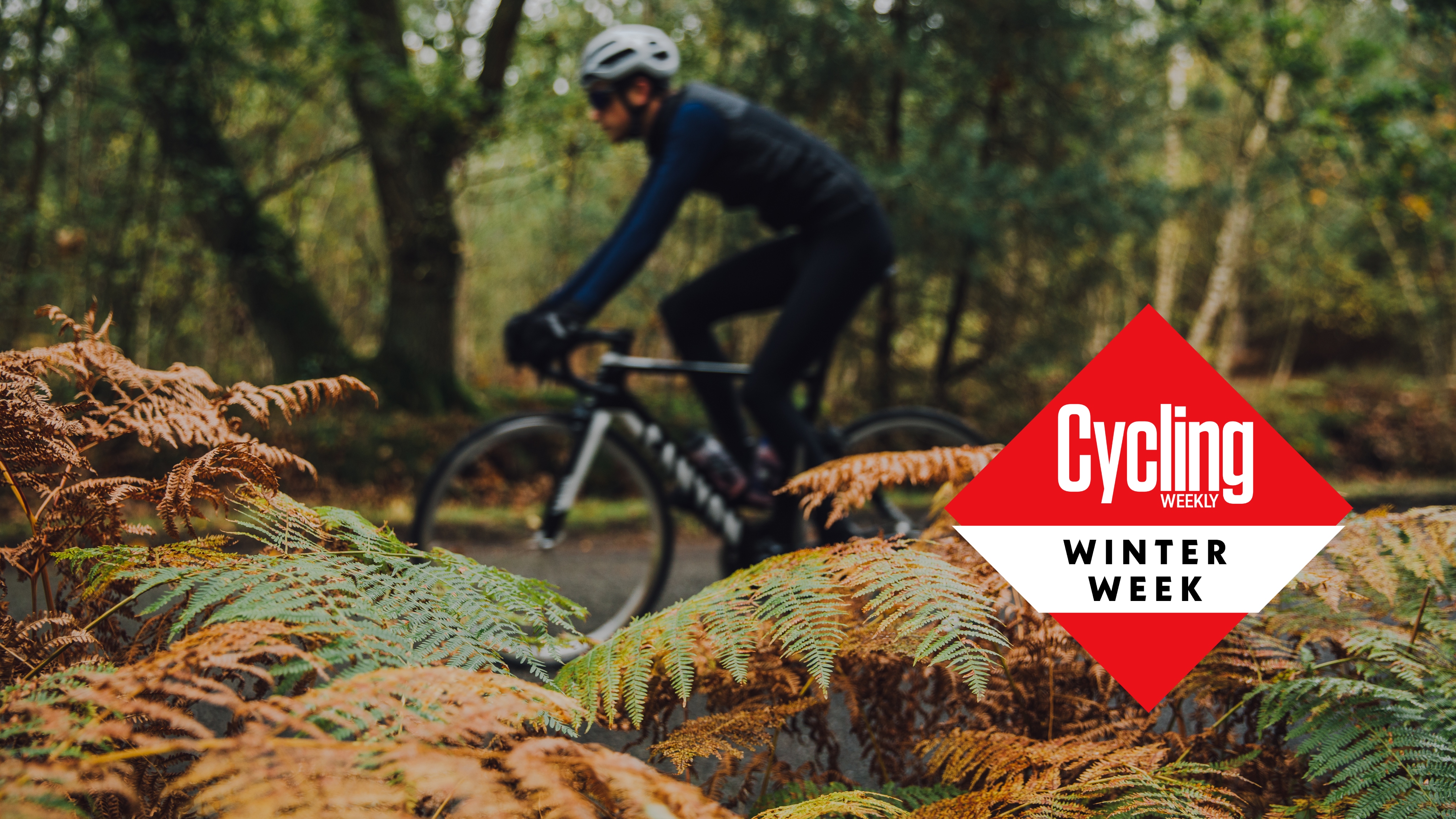In need of riding inspiration this winter? Here are 16 ways to keep your motivation high while the temperatures are low
As chilly breezes replace the warm summer air, the inclination to ride naturally begins to ebb. Here are 16 ways to approach winter with more enthusiasm

- 1. Freshen up with a proper break
- 2. Plan some events for 2023
- 3. Get ready for a great winter
- 4. Catch up with club-mates
- 5. Ride an event just for fun
- 6. Reap the benefits of cyclocross
- 7. Sharpen your top-end by hill-climbing
- 8. Try some new training techniques
- 9. There’s time to ride for riding’s sake
- 10. Form some go-faster habits
- 11. Do an overnighter
- 12. Stay ready for winter
- 13. Avoid the off-season blues
- 14. Ride a new route
- 15. Make the most of the daylight
- 16. Seek out new Strava targets
Depending how you organise your cycling year, winter is either a welcome part of your season when you have some fun with your fitness, taking part in cyclocross races and spirited weekend rides with friends, or it’s a time when your motivation dips and your training begins to tail off as you lament the falling temperatures.
In the latter case, the risk is you’ll have a lot of catching up to do come spring. So how to stay motivated to keep riding?
Of course, it’s important to take an end-of-season break; choosing when best to do so depends on how you feel and how your racing schedule panned out.
Most cyclists benefit from taking around a fortnight off with no riding at all, but it is important to listen to your body.
By the end of your time off, you should feel re-motivated and raring to ride. Still need a little extra incentive?
Here are 16 motivating ideas to help you ensure that the “season of mists and mellow fruitfulness” does indeed bear fruit.
1. Freshen up with a proper break
Step one: take a fortnight off the bike to give your body a break, helping you freshen up physically and psychologically.
Get The Leadout Newsletter
The latest race content, interviews, features, reviews and expert buying guides, direct to your inbox!
This is the ideal time to do some light off-the-bike conditioning and cross-training, as well as planning your winter training and next year’s target events.
Don’t worry about losing fitness: the gains will outweigh the minimal losses.
2. Plan some events for 2023

It can be easy to let bad weather get in the way of your motivation, but spring will roll around quicker than expected, and having a goal in mind can help keep your motivation up over the inclement months.
All through spring and summer there are sportives of varying lengths, plus way marking, support and feed stations - all factors which can make a challenging ride so much easier to complete!
Better still, pre-registering means you'll get notification of early bird booking which could save you money off the entry fee.
3. Get ready for a great winter
Consistency is the ultimate key to achieving your long-term goals, so once you have taken your end-of-season break, return as soon as possible to a structured regime.
Sticking to a training schedule during the autumn and winter, after your break, will make starting training much easier. Fitness is lost more quickly than it’s gained, but maintaining is easier than gaining.
You don’t need to spend the winter months slaving away on the turbo trainer, but trying to maintain a certain number of hours training per week will pay dividends next season.
Luke Rowe, pro cyclist at Team Sky and coach at Rowe and King, explains why week-to-week consistency is important: “Consistency is absolutely key — for most riders, doing four 90min sessions during a week is far better than one big six-hour day at the weekend.”
The same is true for your yearly training cycle: you’re better off riding close to your average weekly training hours each week rather than yo-yoing between massive hours in August and none in January.
4. Catch up with club-mates

Winter is a great time to go out riding with friends without worrying so much about sticking strictly to cycling training zones or completing arduous, intense sessions.
Therefore, it’s also a good time of year to catch up with club-mates and friends who may be at different levels of fitness — for now, it doesn’t matter.
Spinning through leafy lanes while catching up with like-minded riders provides a refreshing change from gritting your teeth in relentless sessions.
If you've not been on a group ride before, you can find out about the basics on how to cycle in a group here.
5. Ride an event just for fun
The pressure you heap on yourself during the season can take its toll. Once winter rolls around, the remaining races can be ridden just for fun.
Paradoxically, not caring how you do in an event often leads to a better performance on the day. Easing back on pressure and expectations can prove productive in training — try to avoid riding out of a sense of obligation, and remember the main aim: enjoyment.

6. Reap the benefits of cyclocross
Cyclocross is arguably the most fun you can have on two wheels, and can provide a potent boost to your fitness, as well as improving your bike-handling skills at the same time.
Races are held all over the country, and most don’t start very early in the morning, so they’re wholly accessible and family-friendly.
Find details of your local league at: ukcyclocrossevents.co.uk
7. Sharpen your top-end by hill-climbing

If you like your bike racing short and sharp, hill-climbs can’t be beaten — courses are typically two to four minutes long, often lined by cheering crowds.
The miles you have accrued over the summer should see you through such a short effort, and if you want to prepare specifically, it’s a very time-efficient discipline: a weekly session involving four to eight bursts of two to three minutes at maximal effort, ideally on an uphill slope, will soon have you in race-sharp condition.
Rowe explains: “For motivation, hill-climbs at this time of year are a good idea. However working on top-end speed work in the autumn won’t be of much benefit come spring when the road racing starts.”
Rather than thinking of this as training for next season, use it to maintain fitness you’ve already built.
Hill-climbing is great spectator sport, too.
8. Try some new training techniques
During the season, it can be difficult to train optimally while also fitting in regular races. You don’t want to be tired for races, so you’re never training as hard as you could be.
During the winter, there is no such conflict. You’re free to train however you like. Ever wondered whether doing less volume with greater focus may lead to better or equal results to your current training? Or whether cutting down on Zone 2 endurance pace riding could maintain your fitness?
Now is the time to trial these ideas and find out how they affect your performance.
Winter is a really great time to start incorporating strength training into your weekly cycling training plan. Free weights are best for all-round conditioning, but using them safely may require some tuition initially.
Getting used to using weights is the most difficult part, not only because you’ve got to muster the motivation to go to a gym and learn how to lift weights safely, but also because of the inevitable delayed onset muscle soreness (DOMS).
First-time weight training can leave you aching, which can have an impact on your cycling. But it may be worth the effort, as weight training can pay dividends by addressing muscle imbalances, such as quads being too strong relative to glutes, thereby improving your resilience against common cycling injuries.
Time trial champion turned coach Matt Bottrill believes that variety in training is vital to success. “Just as you would never eat the same food every day and expect to enjoy it, the same is true of training. Keep it varied while focusing on progression.”
Winter is a time to reflect on the summer and set new goals, advises Bottrill: “Motivation is about having a clear goal and then working backwards from that goal. If this season didn’t pan out the way you wanted it to, don’t go back to training the same way again for next season.”
This time of year may also be a good time to get physiologically tested — but once is not enough, argues Bottrill: “Testing should be carried out throughout the season — I’m still amazed by the number of riders who do one VO2 max test then train with the same zones all year. Retesting should be done every six weeks, especially through the winter months, to make sure you’re progressing at the correct rate.”
9. There’s time to ride for riding’s sake

Rather than sticking to a certain prescribed power output or heart rate, re-discover the joy of riding your bike unencumbered by data.
Leave the heart rate monitor and power meter at home and ride ‘to feel’ rather than by numerical metrics. Even if you love hard training, going for some aimless pleasure rides in autumn can have a powerful effect on your motivation.
10. Form some go-faster habits
Forming habits is the surest way to achieve long-term goals. Rather than focusing on riding a 10-mile cycling time trial two minutes faster next summer, focus on riding your bike six days a week between now and then. Get into the habit and it becomes second nature, no longer feeling like a chore — requiring little or no motivation.
Research has shown that breaking from a habit once can be enough to undermine it. If you ride your bike throughout the autumn, at the same time each day (e.g. after work), you’ll find it easier to continue doing so.
Break from a habit during the winter and the magnetic tug of the warm, cosy indoors may get the better of you — not to mention the bad habits that could tempt you, such as increased snacking and boozing.
11. Do an overnighter
Make the most of the remaining few weekends of decent weather by organising a mini touring adventure over two or three days. This is a great way to maintain fitness while doing a different type of riding while finding great new places to ride.
Recruit a club-mate or two, and together plan a longer-than-usual loop, with an overnight stay somewhere near the halfway point.
This is a novel way to sneak in some base building miles with the added bonus of feeling like you’re on an adventure.
12. Stay ready for winter
Are your bike lights charged and winter tires fitted? Is your warm, waterproof kit still in serviceable condition, or does it need re-waterproofing? If it does, find out how to re-waterproof your cycling gear to make it perform like new here. Perhaps you’ve finally earned those new overshoes you promised yourself two seasons ago?
Make sure that you’re ready to take on the cold seasons with the best winter cycling clothing and keep riding in as much comfort as possible.
13. Avoid the off-season blues
Cycling makes us feel brighter, that barely needs scientific support. Nonetheless, studies show that exercise is beneficial to people suffering from mild to moderate episodes of depression.
Although the exact reasons for this link aren’t clear, it’s probable a number of factors come into play. One possible reason is that inflammation — associated with depression — is reduced by moderate exercise. Exercise also takes you outdoors, encourages you to socialise with others, and get fresh air and sunlight.
14. Ride a new route
It’s easy to fall into a rut and keep riding the same loops again and again during the season, and in some ways this is helpful for training accuracy. But this can lead to boredom in training and a lack of motivation.
Spend some time exploring new roads in your area and add some new regular loops to your evening and weekend repertoire.
This will not only add some spice to your winter riding time, but will help keep motivation high over the winter.
If you’re less fit than usual right now, riding new routes also takes the pressure off.
15. Make the most of the daylight
The clocks went back by one hour on October 30, and so we’re now having to deal with dark evenings until the end of March. And, come mid-winter, it’ll be dark by 4pm — eugh!
If you can, reorganise your day so that you have time to pop out in your lunch break to make the most of the shorter window of sunlight.
16. Seek out new Strava targets
With summer racing behind you and a winter of training ahead, autumn is the perfect time to hunt down some new Strava segments to aim for next season.
The pressure is off at this time of year so you can recce segments without feeling as though you need to ride your fastest time, while making note of the start and finish lines of the segment and mulling over the pace you’ll need to ride to bag the Strava KOM or make it into the top 10.
By tracking your progress over a segment, you can ascertain a good sense of your fitness.

Thank you for reading 20 articles this month* Join now for unlimited access
Enjoy your first month for just £1 / $1 / €1
*Read 5 free articles per month without a subscription

Join now for unlimited access
Try first month for just £1 / $1 / €1
-
 'I'll take a top 10, that's alright in the end' - Fred Wright finishes best of British at Paris-Roubaix
'I'll take a top 10, that's alright in the end' - Fred Wright finishes best of British at Paris-RoubaixBahrain-Victorious rider came back from a mechanical on the Arenberg to place ninth
By Adam Becket Published
-
 'This is the furthest ride I've actually ever done' - Matthew Brennan lights up Paris-Roubaix at 19 years old
'This is the furthest ride I've actually ever done' - Matthew Brennan lights up Paris-Roubaix at 19 years oldThe day's youngest rider reflects on 'killer' Monument debut
By Tom Davidson Published
-
 Riding with Raynaud’s: How to beat cold hands and feet over winter
Riding with Raynaud’s: How to beat cold hands and feet over winterSymptoms of Raynaud's syndrome extend far beyond simply having chilly hands and feet, our experts guide you through the how-to on making winter riding bearable despite the disease
By Lexie Williamson Published
-
 18 tips for finding winter motivation to ride
18 tips for finding winter motivation to rideDon't let cooler weather keep you off the bike, there are plenty of ways to keep the enthusiasm high
By Andy Turner Published
-
 How much running is ‘too much’ running for cyclists - I trained for a marathon to find out
How much running is ‘too much’ running for cyclists - I trained for a marathon to find outMany cyclists like to swap their cleats for running shoes - at least for some sessions — during winter, but where should we draw the line?
By Ellie Donnell Published
-
 Symptoms of Seasonal Affective Disorder are more common than you think - here's how to battle the blues
Symptoms of Seasonal Affective Disorder are more common than you think - here's how to battle the bluesIt’s no secret that the winter months can switch one’s mood to a doom and gloom setting – here’s how to lighten the load
By Rob Kemp Published
-
 These five winter training mistakes can ruin your fitness - here's how to avoid them
These five winter training mistakes can ruin your fitness - here's how to avoid themThe pitfalls to avoid if you want to emerge fit and well come spring
By Andy Turner Published
-
 Seven benefits of riding outdoors - which you’ll miss out on if you train inside all winter
Seven benefits of riding outdoors - which you’ll miss out on if you train inside all winterAs with most things in life, there is a balance to be struck…
By Andy Turner Published
-
 Winter fueling: how to match your cycling nutrition to the demands of cold weather riding
Winter fueling: how to match your cycling nutrition to the demands of cold weather ridingGetting the most out of your winter training means making sure you are optimally fuelled for every ride - here's what you need to know about the specific demands of cold season nutrition
By Joe Laverick Published
-
 Five things I wish I knew before my first winter of road riding
Five things I wish I knew before my first winter of road ridingThere's a special satisfaction to riding through the winter - but also plenty of challenges!
By Anna Marie Abram Published